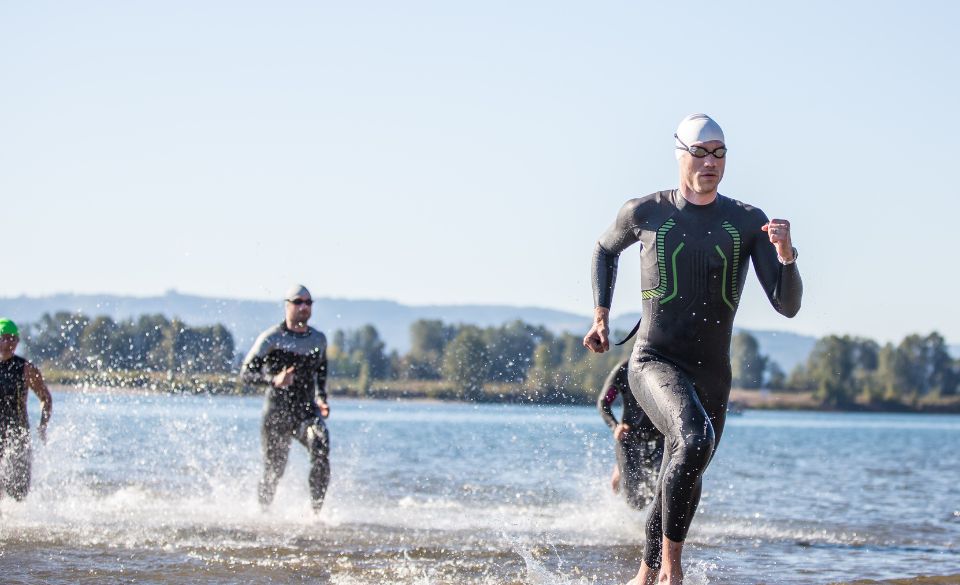
How Do You Get a Sub 11-Hour Ironman?
Page Contents
The Ironman triathlon is one of the most challenging endurance events in the world, consisting of a 2.4-mile (3.86 km) swim, a 112-mile (180.25 km) bike ride, and a full marathon 26.2-mile (42.20 km) run. Completing an Ironman is a remarkable achievement in itself, but for many athletes, the goal is to finish with a sub 11-hour time. In this blog post, we’ll explore the strategies and key factors that can help you achieve this ambitious goal.
Setting Realistic Goals and Training Plan
The first step in pursuing a sub 11-hour Ironman is to set realistic goals and develop a structured training plan. Assess your current fitness level, endurance capabilities, and time commitment available for training. It’s crucial to be honest with yourself and set achievable targets that take into account your strengths and limitations.
A well-rounded training plan should include regular swim, bike, and run sessions, along with strength training and recovery days. Gradually increase your training volume and intensity over time to build endurance and improve performance. Consider working with a qualified coach who can design a personalized plan tailored to your specific needs and provide guidance throughout your training journey.
Focus on Efficient Swim Technique and Endurance
The swim leg of an Ironman can be particularly demanding, both physically and mentally. To optimize your performance, focus on developing an efficient swim technique and building endurance in the water. Improving your swim technique can help you conserve energy and maintain a steady pace throughout the swim portion.
Consider incorporating interval training and drills into your swim sessions to improve stroke efficiency, body position, and breathing technique. Building endurance through longer swim sessions and open water practice can help you feel more comfortable and confident on race day.
Build Strength and Power on the Bike
The bike leg of an Ironman is often considered the longest and can significantly impact your overall time. To achieve a sub 11-hour Ironman, it’s essential to build strength and power on the bike while maintaining a consistent and sustainable pace.
Include regular long rides to build endurance, along with shorter, high-intensity interval training to improve speed and power output. Focus on developing a strong cycling technique, optimizing your bike fit for comfort and efficiency, and practicing fueling strategies to sustain energy throughout the ride.
Run Smart and Efficiently
The marathon run at the end of an Ironman can be physically and mentally grueling, especially after swimming and cycling for hours. To achieve a sub 11-hour time, it’s crucial to run smart and efficiently while conserving energy.
Incorporate a mix of long runs, tempo runs, and interval training into your training plan to build endurance and improve running speed. Practice running off the bike during your training to get accustomed to the feeling and adjust your pacing accordingly. Focus on maintaining good running form, staying mentally focused, and fueling properly to avoid hitting the wall during the run leg.
Mental Preparation and Race Strategy
In addition to physical preparation, mental strength and race strategy are key factors in achieving a sub 11-hour Ironman. Develop mental resilience by visualizing success, setting smaller milestones during the race, and practicing positive self-talk. Break down the race into manageable segments and focus on executing your strategy without getting overwhelmed by the entire distance.
Having a well-thought-out race strategy is essential. Plan your pacing for each leg, transitions, and nutrition/hydration strategy to ensure a smooth and efficient race day experience. Practice your race strategy during your training sessions to fine-tune and make adjustments as needed.
Sub 11 Ironman Splits
To provide further insight and help you plan your race strategy, let’s dive into a more detailed breakdown of the splits for a sub 11-hour Ironman:
1. Swim: Aim to complete the 2.4-mile (3.86 km) swim in approximately 1 hour and 10 minutes. This translates to an average pace of around 1:45 to 1:50 per 100 yards (or 1:55 to 2:00 per 100 meters). Keep in mind that open water conditions and factors like currents and waves can affect your swim time. Practice open water swimming and sighting techniques to navigate efficiently and maintain a steady pace.
2. Transition 1 (T1): Minimize your transition time by being well-organized and having a clear plan. Practice transitioning quickly from the swim to the bike during your training sessions. Aim to complete T1 in under 5 minutes, including changing into your cycling gear, putting on your helmet, and grabbing nutrition and hydration.
3. Bike: The bike leg is where you can make up significant time. Aim to complete the 112-mile (180.25 km) bike ride in around 5 hours and 30 minutes. This means maintaining an average speed of approximately 20 mph (32 km/h) or faster. Remember to pace yourself wisely, especially considering any hills or challenging sections on the course. Regularly fuel and hydrate to maintain energy levels throughout the ride.
4. Transition 2 (T2): Similar to T1, aim to keep your T2 time as short as possible, ideally under 5 minutes. Practice quickly transitioning from the bike to the run during your training. Change into your running gear, swap shoes, and grab any necessary nutrition or hydration before heading out for the run.
5. Run: The marathon run is the final leg of the Ironman. Aim to complete the 26.2 miles (42.20 km) in approximately 3 hours and 30 minutes. This translates to an average pace of around 8 minutes per mile (5 minutes per kilometer) or slightly faster. Remember to pace yourself, as fatigue may set in after the swim and bike. Break the run into smaller segments, focus on maintaining good form, and fuel regularly to sustain your energy levels.
Keep in mind that these split times are approximate and can vary based on individual capabilities, course conditions, and external factors. It’s crucial to train consistently and develop a race strategy that suits your strengths and goals. Practice brick workouts (combining bike and run) to simulate race conditions and get accustomed to the transition between disciplines.
During the race, listen to your body and make necessary adjustments to your pace and nutrition plan. Remember that an Ironman is an endurance event, and pacing yourself appropriately is essential for maintaining energy levels and avoiding burnout.
Final Words
In conclusion, achieving a sub 11-hour Ironman requires a well-balanced effort across the swim, bike, and run legs, along with efficient transitions. By setting realistic split goals, training consistently, and executing a smart race strategy, you’ll put yourself in a strong position to achieve your sub 11-hour Ironman goal. Embrace the challenge, trust your training, and enjoy the journey towards this remarkable achievement.



